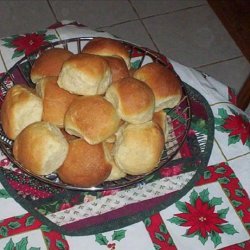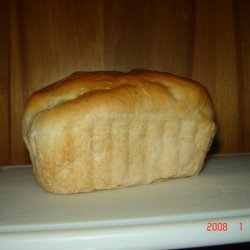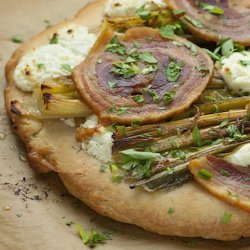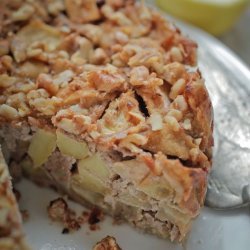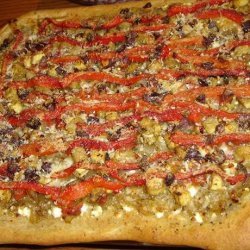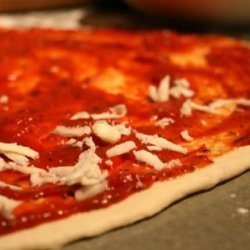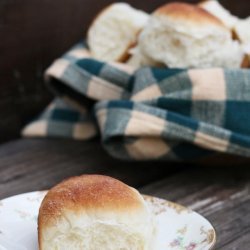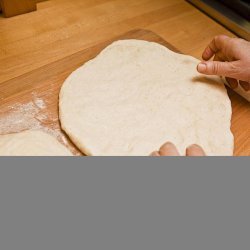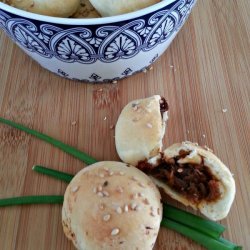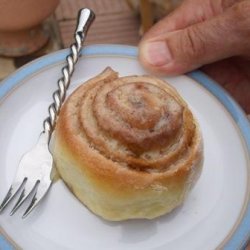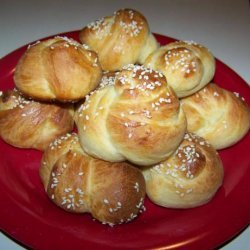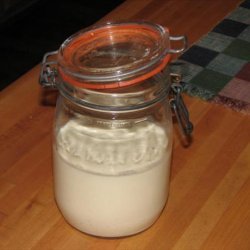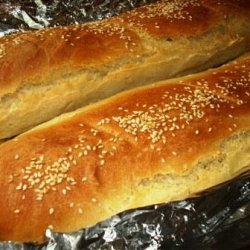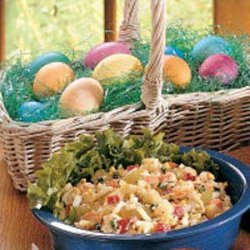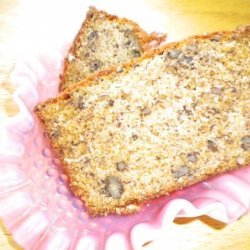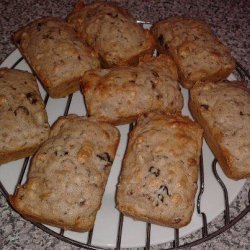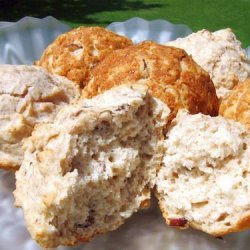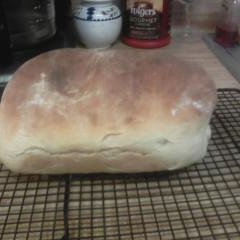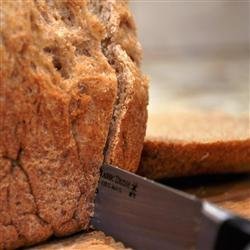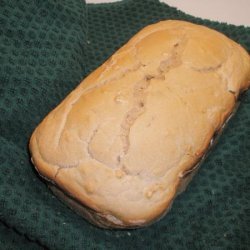Ingredients:
- 2 cups lukewarm water (or other liquid, see below)
- nuts (optional, 2-8 tsp) or dried fruits (optional, 2-8 tsp)
Directions:
- Pour 2 c liquid into large mixing bowl. I usually make use of anything I want to use up: -the tail end of a container of milk or chocolate milk or hot cocoa or soy milk or rice milk (milk makes a soft tender bread, especially nice in whole grain breads; a bit of chocolate gives it a darker look), -the end of a container of yogurt (I don't use fruit-flavored, but plain or sweetened is OK), -the end of can of beer (you won't taste it, but it produces a bread that won't mold), -the last bit of coffee in the pot (Gives the bread a darker look. Pumpernickel recipes are sometimes darkened with some coffee or cocoa), -potato-cooking water (whenever I boil peeled potatoes, I save the water for bread-baking, because it makes such a light dough). I use a two cup measure, pour in anything I want to use up, and then fill to the two cup mark with water if needed. If I'm out of milk, but want the richness of milk (say in a whole grain or squash bread) I sometimes add milk powder.
- If you want the bread to rise quickly, heat the liquid to lukewarm. If you have time to wait for a slow rise, cold is fine, too. Professional bakeries use a slow rise, which yields a wonderful texture.
- Stir in up to 1 c of cooked oatmeal, rice, cream of wheat, grits, wheat berries, millet, mashed potatoes, mashed sweet potatoes, mashed squash, etc. Cooked grains give texture. Mashed potatoes make a light, high-rising bread. Sweet potatoes or squash yield a lovely yellow color. You can combine more than one of these, but I don't recommend more than a cup total. I don't take time to prepare these ingredients especially for bread-making, but include them when I have leftovers I want to use up.
- It's OK to whisk in an egg or two. When I baking for vegetarians, and want to kick up the protein, I'll do that. Or when I've made French toast for breakfast, and have a little of the egg-milk mixture left over, I'll include that in the day's bread rather than throw it away.
- Stir in 2 T sugar, honey, molasses, brown sugar, sorghum, etc. Up to 4 T works fine, or you can leave it out entirely. Honey creates a wonderful aroma when the bread comes out of the oven. Molasses makes a darker bread.
- Stir in 2 T olive oil or melted butter or lard or bacon grease or other fat. You can leave the fat out entirely if you plan to eat the bread the first day-fat-free bread is quickly stale. Four T fat makes a nice rich bread. Butter is my own favorite-it works best if you have lukewarm liquid; with cold liquid it turns to lumps.
- Whisk in 2 T yeast for a quick process. Or use just 2 t yeast and allow time for a long sponge phase (described below). It is up to you and the time you have.
- Whisk in 2 t salt. (My family is happy with just about any variety of bread I make, except on those occasions when I forget to add the salt!)
- Whisk in 2 c flour: I like to use whole wheat or rye, but white is fine. And I often use up to 1/2 c of some other grain-cornmeal or buckwheat or soy flour or whatever. But these flours don't contain gluten, and are best used in small amounts.
- At this point, you have a sponge. You can set it aside for a while, to let the gluten develop, and the yeast to begin its bubbling. If you use cold water and a small amount of yeast, you can let the sponge sit all day while you are at work, or overnight. If you use warm liquid and the full 2T yeast, the sponge will start bubbling within a few minutes. Once you have a nice bubbly sponge, you can go on to the next step.
- Stir in chopped nuts or dried fruits. I rarely do this, because it's not very popular at my house, but like the texture of 2 T sunflower seeds on occasion, or the sweet bursts from a handful of raisins, especially in dark breads.
- Stir in 2 c flour. I normally use white flour at this stage. If you used milk for the liquid, and included 2-4 T fat, whole wheat or rye flour can also work well.
- Add the last 2 c white flour gradually, stirring and then kneading to form soft dough. Knead several minutes. Since the amount of liquid in the recipe may vary, you may need to use additional flour. This yields larger loaves.
- Allow dough to rise in bowl until double. (It will rise faster in a warm place.).
- Punch down and allow to rise a second time. (If I had a long sponge phase, I skip the second rise.).
- Grease 2 bread pans; divide dough in half; shape two loaves and place in pans. Preheat oven to 350.
- When dough no longer bounces back when lightly touched with a fingertip, bake the loaves 1 hour.
Nutrition Facts
| Amount Per 1 Serving | |||
| Calories | 1513.7 Kcal (6338 kJ) | ||
| Calories from fat | 479.04 Kcal | ||
| % Daily Value* | |||
| Total Fat | 53.23g | 82% | |
|---|---|---|---|
| Sodium | 6433.67mg | 268% | |
| Potassium | 629.52mg | 13% | |
| Total Carbs | 229.39g | 76% | |
| Sugars | 4.1g | 16% | |
| Dietary Fiber | 25.47g | 102% | |
| Protein | 30.55g | 61% | |
| Iron | 14.6mg | 81% | |
| Calcium | 670.5mg | 67% | |
| Amount Per 100 g | |||
| Calories | 400.55 Kcal (1677 kJ) | ||
| Calories from fat | 126.76 Kcal | ||
| % Daily Value* | |||
| Total Fat | 14.08g | 82% | |
|---|---|---|---|
| Sodium | 1702.45mg | 268% | |
| Potassium | 166.58mg | 13% | |
| Total Carbs | 60.7g | 76% | |
| Sugars | 1.08g | 16% | |
| Dietary Fiber | 6.74g | 102% | |
| Protein | 8.08g | 61% | |
| Iron | 3.9mg | 81% | |
| Calcium | 177.4mg | 67% | |
* Percent Daily Values are based on a 2000 calorie diet. Your daily values may be higher or lower depending on your calorie needs.
Find out how many calories should you eat.
Get Your Recipe of Health!
Follow RecipeOfHealth on Facebook!


